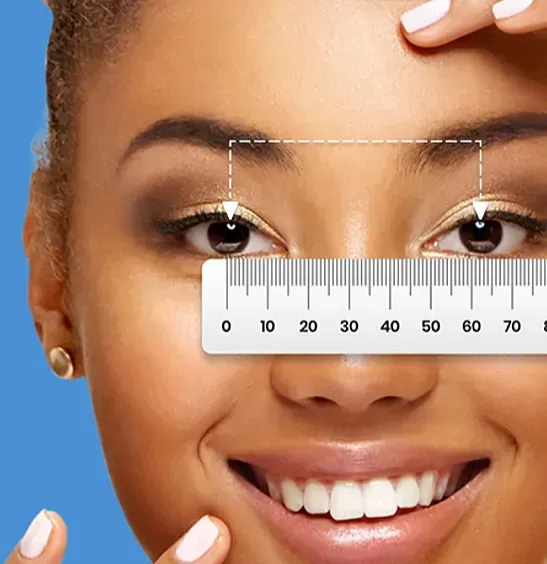How To Guides
Here you will find useful guides on how to get the best out of G4E. From"How To" read and understand your eyeglass prescriptions, to "How To" choose the best frames for your face.
How To Read Your Eyeglass Prescription
Understanding your eyeglass prescription is essential for choosing the right eyewear and maintaining optimal vision. Although this may seem overwhelming, this guide is designed to make this process easier, we promise!
Before we can delve into what each number and symbol means, we need to make sure we are familiar with the basic terminology of your eyeglass prescription. Let's Begin!

Eyeglass Prescription Terminology
OD and OS
These abbreviations stand for "Oculus Dexter" and "Oculus Sinister" which mean "Right Eye" and "Left Eye" in Latin.
Sphere (SPH)
This measurement indicates the lens power necessary for each eye. For nearsightedness, a (+) is used, and for farsightedness a (-) is used. The measurement is in diopters (D).
Cylinder (CYL)
This lens power is used to correct astigmatism. This is also measured in diopters (D). Astigmatism is a common condition where the Cornea or lens of the eye is irregularly shaped....
Axis (Ax)
This measurement is only present if you have astigmatism. The numbers under this column refer to angle degrees (1 to 180) and not diopters (D). If your prescription included Cylinder...
ADD
This measurement is only used for multifocal (progressive or bifocal) lenses. It refers to the added magnifying power that's applied to the bottom part of the lens in multifocal lenses....
Prism
This is the prismatic power used to correct double vision or vision displacement. This happens when your eyes do not align correctly, so it creates two images instead of one, which...
Base
This is the way the base of the prism is facing to correct your vision. This is usually written out as BU (Base Up), BD (Base Down), BI (Base In), or BO (Base Out).
Pupillary Distance (PD)
This measurement is essential to ordering glasses, especially online. This is the distance between the centers of your pupils.

Looking Deeper Into Your Prescription
Choose The Right Frames For You
Understanding your eyeglass prescription allows you to choose the right frames for you. Your prescription will determine the type of lenses you need, such as Single-Vision for nearsightedness or farsightedness, Bifocals, or Progressive lenses if you require magnification for reading. All this is important, but it's just as important to consider style and comfort. When choosing frames, consider your personal style and see what frames best suit your face shape. To help with this we have the Frames 4 Days consultation that we offer to assist you in picking the best glamorous frames for you! Click the link below and schedule an appointment!
How To Measure Your PD



